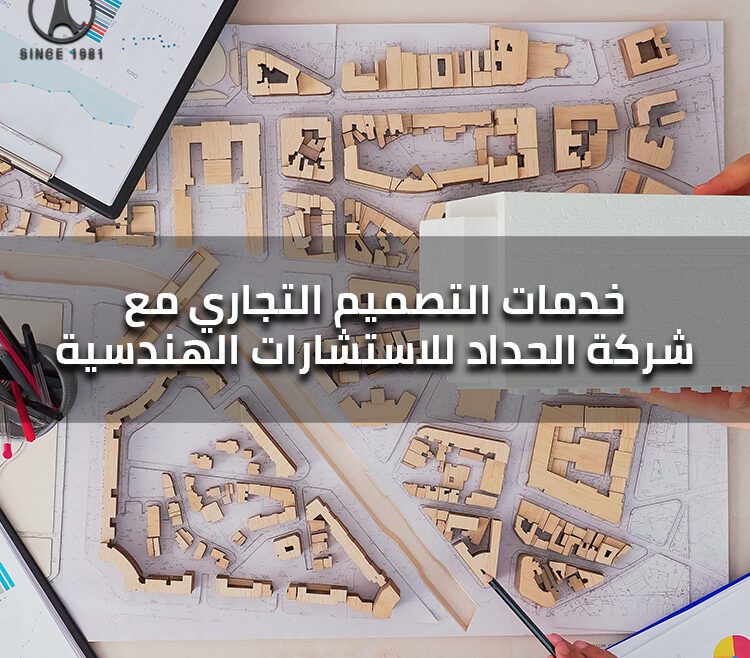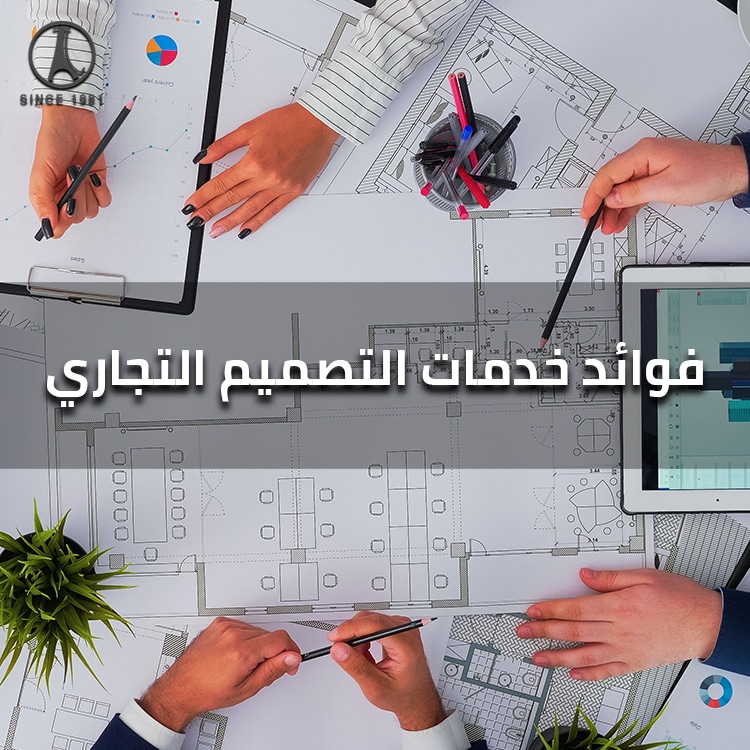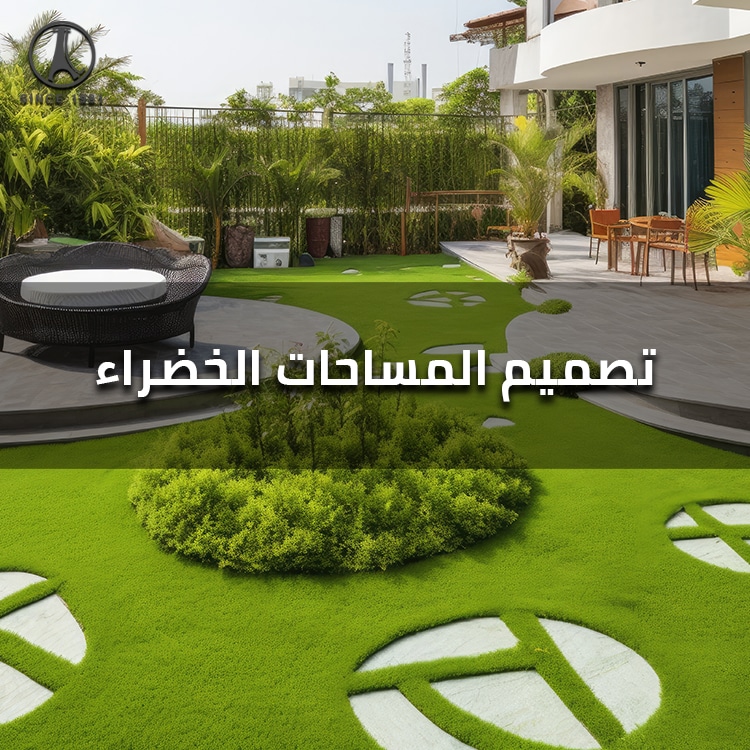مكتب هندسي الظهران وأهميته في المجتمع المحلي والعالمي
ما هو مكتب هندسي الظهران؟
مكتب الحداد للاستشارات الهندسية هو مكتب هندسي مُعتمد يقع في مدينة الظهران في المملكة العربية السعودية.مكتب هندسي الظهران، يعتبر واحدًا من الشركات الرائدة في مجال الهندسة المعمارية والإنشائية في السعودية , بدأ هذا المكتب رحلته برؤية تهدف إلى تقديم حلول هندسية مبتكرة ومتطورة لمشاريع مختلفة تلبي احتياجات المجتمع بشكل فعال.
الابتكارات والتطورات الهندسية
تمتلك مكتب هندسي الظهران الحداد تاريخًا من الابتكار والتطور في مجال الهندسة، حيث اعتمد على أحدث التقنيات والمعايير العالمية في تصميم وتنفيذ مشاريعه. كما قام بتطوير استراتيجيات جديدة للحفاظ على الاستدامة والجودة في كل عمل يقوم به، مما جعله يحظى بسمعة طيبة واسعة في المملكة.
يُقدم مكتب هندسي الظهران مجموعة واسعة من الخدمات الهندسية، تشمل:
التصميم الهندسي:
يتميز مكتب هندسي الظهران بتقديم خدمات تصميم هندسي مبتكرة ومتطورة تلبي احتياجات العملاء بدقة واحترافية عالية. يعتمد المكتب على فريق من الخبراء والمهندسين المحترفين الذين يسعون دائمًا لتحقيق التميز في كل تصميم يخرج من أيديهم.
استشارات هندسية متخصصة:
بفضل خبرة مكتب هندسي الظهران الطويلة والاحترافية، يعتبر مقصدًا رئيسيًا لمن يبحثون عن استشارات هندسية متخصصة وذات جودة عالية. يقدم المكتب حلولًا استشارية متكاملة ومتخصصة لمشاريع مختلفة، مما يساعد العملاء على تحقيق أهدافهم الهندسية بكفاءة ونجاح.
تقديم الاستشارات الهندسية لجميع مراحل المشروع:
يُقدم مكتب الحداد خدمات الاستشارات الهندسية لجميع مراحل المشروع، بدءًا من مرحلة التخطيط ووصولًا إلى مرحلة التنفيذ، وذلك لمساعدة العملاء على اتخاذ القرارات الصائبة وتحقيق أفضل النتائج.
إعداد الدراسات والتحليلات الهندسية:
يُقدم مكتب الحداد خدمات إعداد الدراسات والتحليلات الهندسية اللازمة لضمان نجاح المشروع، مثل دراسات الجدوى ودراسات التأثير البيئي ودراسات الأحمال.
تقديم الاستشارات الفنية والتكنولوجية:
يُقدم مكتب الحداد خدمات الاستشارات الفنية والتكنولوجية المتعلقة بالتصميم والتنفيذ، مثل أنظمة التكييف والتهوية والتدفئة وأنظمة الإضاءة وأنظمة السلامة.
التصميم المعماري:
تصميم المباني السكنية والتجارية والمؤسساتية: يمتلك مكتب الحداد فريقًا من المهندسين المعماريين ذوي الخبرة الواسعة في تصميم مختلف أنواع المباني، بما في ذلك:
- الفلل والقصور.
- الشقق السكنية.
- المباني التجارية مثل المكاتب والمراكز التجارية.
- تصميم المباني ذات الاستخدامات الخاصة مثل المستشفيات والمدارس.
- تصميم المساحات الداخلية.
يُراعي فريق التصميم في مكتب هندسي الظهران الحداد احتياجات العملاء ومتطلباتهم بدقة عند تصميم المباني، مع الحرص على تحقيق التوازن بين الجمال والوظائفية والكفاءة.
التصميم الداخلي:
- تصميم ديكورات المنازل والشقق والمكاتب.
- تصميم المساحات التجارية مثل المحلات والمطاعم.
- تصميم المساحات العامة مثل الحدائق والمنتزهات.
التصميم الإنشائي:
-
- تصميم الهياكل الخرسانية والمعدنية.
- تصميم الأساسات.
- تصميم أنظمة التكييف والتهوية والتدفئة.
إدارة المشاريع والتنفيذ:
إدارة مشاريع البناء بكفاءة وفعالية:
يتمتع مكتب الحداد بخبرةٍ واسعةٍ في إدارة مشاريع البناء بكفاءة وفعالية، مع الحرص على الالتزام بالميزانية والجدول الزمني المحددين.
التأكد من مطابقة تنفيذ المشروع للمواصفات والمعايير:
يُشرف فريق من المهندسين المختصين في مكتب هندسي الظهران الحداد على تنفيذ المشروع للتأكد من مطابقته للمواصفات والمعايير الدولية.
حل مشكلات التنفيذ وإدارة المخاطر:
يتمتع فريق العمل في مكتب هندسي الظهران الحداد بالخبرة الكافية لحل مشكلات التنفيذ وإدارة المخاطر لضمان سير المشروع بشكلٍ سلسٍ ودون أيّ تعقيدات.
الإشراف على التنفيذ:
-
- الإشراف على تنفيذ مشاريع البناء والتأكد من مطابقتها للمواصفات والمعايير.
- حل مشكلات التنفيذ وإدارة المخاطر.
- تسليم المشاريع في الوقت المحدد وضمن الميزانية.
المساهمة في التطوير الحضري
يلعب مكتب هندسي الظهران الحداد دورا هاما في المساهمة في التطوير الحضري بمشاريعه المبتكرة والمتطورة. من خلال تصاميمه الهندسية الرائدة، يعمل المكتب على تحسين جودة الحياة في المجتمع وتطوير البنية التحتية بشكل شامل ومستدام.
دوره في الاستدامة البيئية
بالاعتماد على مفهوم التنمية المستدامة، يساهم مكتب هندسي الظهران الحداد في الحفاظ على البيئة والموارد الطبيعية من خلال تطبيق ممارسات هندسية صديقة للبيئة في مشاريعه. تهدف أعماله لتحقيق التوازن بين النمو الاقتصادي والحفاظ على البيئة لضمان تنمية مستدامة للمجتمع.
المشاريع الدولية البارزة
يتميز مكتب هندسي الظهران الحداد بمشاريعه الدولية البارزة التي تعكس التميز والابتكار في مجالات متعددة. باعتباره جزءًا من المشهد العالمي، يساهم المكتب في تعزيز التبادل الثقافي والاقتصادي بين الدول وتوطيد العلاقات الدولية من خلال مساهماته في مختلف المشاريع.
الابتكارات التكنولوجية العالمية
يتبنى مكتب هندسي الظهران الحداد أحدث التقنيات والابتكارات في مجال الهندسة المعمارية والمدنية لتحقيق أعلى مستويات الجودة والكفاءة في مشاريعه. من خلال تبنيه للتكنولوجيا العالمية، يسعى المكتب لتحسين العمليات وتحقيق الابتكار في جميع جوانب عمله ليكون على الرأس في مجاله على المستوى العالمي.
تحديات مكتب هندسي الظهران
تواجه مكتب هندسي الظهران تحديات متعددة في ظل التطور السريع لصناعة الهندسة والبناء على مستوى العالم. من بين هذه التحديات تأتي الحاجة المستمرة لمواكبة التطورات التكنولوجية وتحديث الكوادر البشرية لضمان جودة الخدمات المقدمة , كما تشمل التحديات أيضًا الضغط المتزايد لتلبية متطلبات العملاء والمحافظة على مستوى التميز والابتكار في جميع المشاريع.
الفرص للنمو والتطور المستقبلي
رغم تحدياته، تتيح صناعة الهندسة والبناء فرصًا كبيرة لمكتب هندسي الظهران للنمو والتطور المستقبلي. يمكن للمكتب استغلال التكنولوجيا الحديثة والابتكارات في تعزيز كفاءة العمل وتحسين جودة المشاريع. كما يمكنه الاستفادة من الطلب المتزايد على الاستدامة والتصميم الذكي لبناء سمعة قوية في السوق العالمية. تشكل الفرص المستقبلية المجال لتوسيع نطاق العمل والتوسع في مجالات جديدة لتحقيق نجاح مستدام ومستقر على المدى البعيد.
الاستثمار في التقنيات الحديثة والابتكار في مجال الهندسة والبناء
دور مكتب الحداد للاستشارات الهندسية في الاستثمار في التقنيات الحديثة والابتكار في مجال الهندسة والبناء:
يُدرك مكتب الحداد للاستشارات الهندسية أهمية الاستثمار في التقنيات الحديثة والابتكار في مجال الهندسة والبناء.
فمن خلال ذلك، يُمكننا:
- تقديم خدماتٍ هندسيةٍ عالية الجودةٍ تُلبي احتياجات عملائنا المتطورة.
- زيادة كفاءة عملياتنا وتقليل التكاليف.
- الحفاظ على ريادتنا في مجال الهندسة والبناء.
ولذلك، نُولي اهتمامًا كبيرًا للاستثمار في التقنيات الحديثة والابتكار في مختلف مجالات عملنا، وذلك يشمل:
استخدام تقنيات التصميم ثلاثي الأبعاد
- نستخدم تقنيات التصميم ثلاثي الأبعاد لتصميم المباني والمشاريع بدقةٍ عاليةٍ وكفاءةٍ أكبر.
تُساعدنا تقنيات التصميم ثلاثي الأبعاد على:
- تحسين التواصل مع عملائنا.
- اكتشاف المشكلات المحتملة في التصميم قبل البدء بالتنفيذ.
- تقليل التكاليف وزيادة كفاءة التنفيذ.
استخدام تقنيات الواقع الافتراضي :
-
- نستخدم تقنيات الواقع الافتراضي لعرض تصاميم المباني والمشاريع لعملائنا بشكلٍ واقعيٍ وجذاب.
تُساعد تقنيات لواقع الافتراضي عملاءنا على:
-
-
- تصور مظهر المبنى أو المشروع بشكلٍ أفضل.
- تقديم ملاحظاتهم على التصميم بسهولة.
- اتخاذ قراراتٍ مُستنيرةٍ بشأن مشاريعهم.
-
استخدام تقنيات الطباعة ثلاثية الأبعاد :
- نستخدم تقنيات الطباعة ثلاثية الأبعاد لإنشاء نماذجٍ ثلاثية الأبعادٍ لمباني ومشاريع مُصغرة.
تُساعدنا تقنيات الطباعة ثلاثية الأبعاد على:
- اختبار تصاميمنا بشكلٍ أفضل.
- شرح تصاميمنا لعملائنا بشكلٍ أوضح.
- تصنيع قطعٍ مُخصصةٍ لبعض المشاريع.
استخدام أنظمة إدارة المباني:
- نستخدم أنظمة إدارة المباني للتحكم في أنظمة التكييف والتهوية والتدفئة والإضاءة في المباني.
تُساعدنا أنظمة إدارة المباني على:
-
- زيادة كفاءة استخدام الطاقة.
- تحسين راحة المُقيمين في المباني.
- تقليل تكاليف تشغيل المباني.
يتميز مكتب هندسي الظهران الحداد للاستشارات الهندسية بالعديد من المزايا، منها:
خبرة واسعة:
-
- يمتلك المكتب فريقًا من المهندسين المعماريين والإنشائيين ذوي الخبرة الواسعة في مختلف مجالات الهندسة.
- عمل المكتب على العديد من المشاريع الناجحة في المملكة العربية السعودية وخارجها.
التزام بالجودة:
-
- يُولي المكتب اهتمامًا كبيرًا بجودة الخدمات التي يُقدمها.
- يُطبق المكتب أحدث معايير الجودة العالمية في جميع مراحل العمل.
أسعار تنافسية:
-
- يُقدم المكتب أسعارًا تنافسية لعملائه.
- يُقدم المكتب عروضًا خاصة للمشاريع الكبيرة.
خدمة عملاء ممتازة:
-
- يُركز المكتب على تقديم خدمة عملاء ممتازة لعملائه.
- يتواصل المكتب مع عملائه بانتظام لتقديم التحديثات حول سير العمل.
الابتكار:
-
-
- يُشجع المكتب موظفيه على الابتكار وتقديم أفكارٍ جديدةٍ.
- يُشارك المكتب في المؤتمرات والفعاليات العالمية المتعلقة بالهندسة والبناء
-
الموثوقية:
-
-
-
- يتمتع المكتب بسمعةٍ طيبةٍ في السوق كونه مكتبًا موثوقًا يُمكن الاعتماد عليه.
- يُكمل المكتب مشاريعه في الوقت المحدد وضمن الميزانية.
-
-
التنوع:
-
-
-
-
- يُقدم المكتب مجموعة واسعة من الخدمات الهندسية، مما يجعله خيارًا مثاليًا لمختلف أنواع المشاريع.
-
-
-
الموقع:
-
-
-
-
-
- يقع المكتب في مدينة الظهران، وهي موقعٌ استراتيجيٌ يُسهل الوصول إليه من مختلف أنحاء المملكة العربية السعودية.
-
-
-
-
الفريق:
-
-
-
-
-
-
- يتكون فريق المكتب من مهندسين ومعماريين مهرة ومُحترفين يُسعدهم تقديم أفضل الخدمات لعملائهم.
-
-
-
-
-
بالإضافة إلى ذلك، نُشجع موظفينا على الابتكار وتقديم أفكارٍ جديدةٍ. ونُقدم لهم التدريب اللازم على استخدام أحدث التقنيات , ونُشارك في المؤتمرات والفعاليات العالمية المتعلقة بالهندسة والبناء كل ذلك لنضمن أننا نُقدم لعملائنا أفضل الخدمات الهندسية وأكثرها ابتكارًا. لذلك، إذا كنت تبحث عن مكتب هندسي مُبتكرٍ يُستخدم أحدث التقنيات في مجال الهندسة والبناء، فإنّ مكتب هندسي الظهران الحداد هو الخيار الأمثل لك.
مشاريع سابقة ناجحة
يُعتبر مكتب هندسي الظهران من الرواد في تنفيذ مشاريع هندسية مبتكرة وناجحة. تميز المكتب بقدرته على تنفيذ مشاريع متنوعة في مجالات الهندسة المدنية والهندسة المعمارية بجودة عالية وفي المواعيد المحددة. تشمل أمثلة عملية للمشاريع الناجحة التي قام بها المكتب: تصميم وإنشاء مجمعات سكنية فاخرة، وتنفيذ مشاريع تطوير المدن والبنية التحتية بطرق مستدامة ومبتكرة.
تأثير المكتب في تحسين البنية التحتية
من خلال مساهمته المستمرة في تطوير البنية التحتية، يعزز مكتب هندسي الظهران الاستدامة والابتكار في جميع المشاريع التي يشارك في تنفيذها. بفضل خبرته الواسعة والكفاءات التقنية التي يتمتع بها، يساهم المكتب في تطوير مشاريع البنية التحتية للمدن بطريقة تلائم احتياجات المجتمع وتوجهات الاستدامة العالمية. يعكس تأثير المكتب إلتزامه بتحقيق تطور مستدام واستدامة بنية تحتية عصرية ومبتكرة في المملكة وخارجها.



















 Unraveling Al-Haddad Engineering engineering consultant companies in saudi arabia
Unraveling Al-Haddad Engineering engineering consultant companies in saudi arabia In-House Research and Development
In-House Research and Development Investment in Employee Growth
Investment in Employee Growth
 Navigating the Industry: A Guide to engineering consulting companies in Riyadh
Navigating the Industry: A Guide to engineering consulting companies in Riyadh How engineering consulting companies in riyadh Bring Ideas to Life
How engineering consulting companies in riyadh Bring Ideas to Life How Riyadh’s engineering consulting companies in riyadh are Shaping the Future
How Riyadh’s engineering consulting companies in riyadh are Shaping the Future




